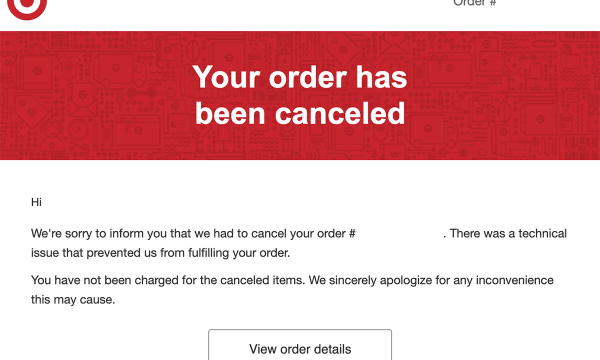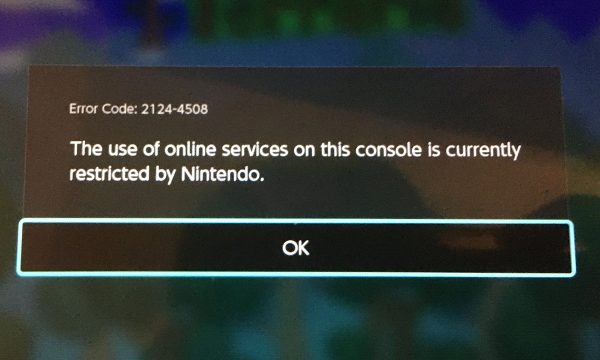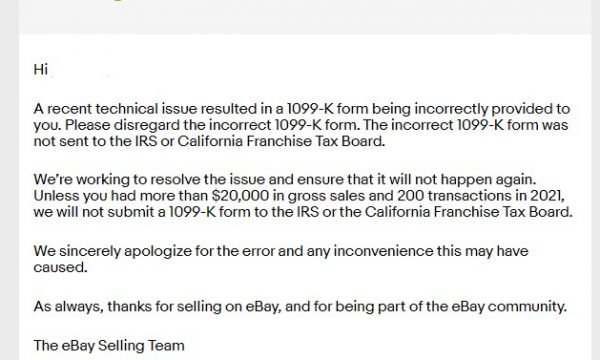Does finasteride (Propecia) ever stop working?
- How does finasteride (Propecia) work for hair loss?
- How does finasteride regrow hair?
- How long does it take for finasteride to work?
- How well does finasteride work?
- Does finasteride work permanently?
- What happens if I stop taking finasteride?
- Is finasteride a high risk medication?
- How common are negative side effects of finasteride?
- Are there any permanent side effects of finasteride?
- What does finasteride do to a man?
- Can I take finasteride (Propecia) forever?
- How do I get started with finasteride?
How does finasteride (Propecia) work for hair loss?
Finasteride is a medication that is used to treat male pattern baldness. It works by inhibiting the activity of an enzyme called 5-alpha-reductase, which converts testosterone into dihydrotestosterone (DHT). DHT is a hormone that is thought to play a major role in hair loss, as it can shrink hair follicles and make them less productive. By inhibiting the activity of 5-alpha-reductase, finasteride reduces the levels of DHT in the scalp, which can help to slow down hair loss and even promote new hair growth. It is available by prescription only, it is usually taken once a day and it may take 3-6 months to see any visible results. However, it’s important to note that finasteride is not suitable for everyone and it may cause some side effects. Before taking the medication, it’s important to consult with a healthcare professional to evaluate the potential risks and benefits.
How does finasteride regrow hair?
Finasteride is thought to regrow hair by reducing the levels of dihydrotestosterone (DHT) in the scalp. DHT is a hormone that can shrink hair follicles and make them less productive, leading to hair loss. By inhibiting the activity of an enzyme called 5-alpha-reductase, which converts testosterone into DHT, finasteride reduces the levels of DHT in the scalp. This can help to slow down hair loss and even promote new hair growth.
When hair follicles are exposed to high levels of DHT, they shrink and become less productive, eventually producing thin or no hair at all. Finasteride works by blocking the production of DHT, allowing the hair follicles to return to their normal size and start producing thicker, healthier hair.
However, it’s important to note that finasteride does not work for everyone, and it may not be able to regrow hair in all cases of hair loss. Additionally, it’s important to understand that finasteride is not a cure for hair loss and it is not able to regrow hair in all cases of hair loss. Also, the hair regrowth is not immediate, it may take several months for the hair to start growing back and it may not be as thick as it was before hair loss. It’s important to have realistic expectations and to discuss the potential risks and benefits with a healthcare professional before taking finasteride.
How long does it take for finasteride to work?
Finasteride usually takes several months to start showing visible results in treating male pattern baldness. It is typically recommended to take the medication for at least 3 to 6 months before determining its effectiveness. Some men may begin to see improvement in as little as 3 months, while others may not see any benefits until after 6 months of use. However, it is important to note that the results can vary from person to person, and it may take longer for some individuals to see an improvement. Additionally, once you stop taking the medication, any hair growth that has occurred will be lost within 12 months. To maintain the benefits, it’s important to continue taking the medication on a regular basis. It’s important to have realistic expectations and to keep in mind that finasteride is not a cure for hair loss, it only slows down hair loss, and it may not work for everyone. Consult with a healthcare professional to evaluate the potential risks and benefits of finasteride.

How well does finasteride work?
Finasteride is a medication that has been shown to be effective in treating certain conditions, such as male pattern baldness (MPB) and benign prostatic hyperplasia (BPH). However, it’s important to note that the effectiveness of finasteride can vary from person to person.
For male pattern baldness (MPB), finasteride is typically prescribed to be taken daily for at least six months, and in some cases, up to a year, to see improvement in hair growth. Studies have shown that finasteride can effectively slow hair loss, and in some cases, regrow hair. In a clinical trial of 1,553 men with MPB, finasteride increased the number of scalp hairs by 8.3%, and decreased the number of scalp hairs lost by 18.3% over a period of 48 weeks.
For benign prostatic hyperplasia (BPH), finasteride is typically prescribed to be taken daily for at least six months, and in some cases, up to a year, to see improvement in symptoms. Studies have shown that finasteride can effectively reduce the size of the prostate and improve symptoms such as difficulty urinating, weak urine flow, and frequent urination. In a clinical trial of 3,047 men with BPH, finasteride reduced the prostate size by an average of 25% over a period of 48 weeks.
It’s important to note that finasteride is not a cure for hair loss or BPH, and it’s important to keep realistic expectations. The results of finasteride can vary from person to person, and it may not work for everyone. If you take finasteride and don’t see improvement, or experience persistent side effects, it’s important to consult with your healthcare provider to determine the best course of action.
Does finasteride work permanently?
Finasteride can be effective in slowing down hair loss and promoting new hair growth, but it is not a permanent solution. If you stop taking the medication, any hair growth that has occurred will be lost within 12 months. In order to maintain the benefits, it is important to continue taking finasteride on a regular basis.
Finasteride works by reducing the levels of dihydrotestosterone (DHT) in the scalp, which is a hormone that can shrink hair follicles and make them less productive, leading to hair loss. By inhibiting the activity of an enzyme called 5-alpha-reductase, which converts testosterone into DHT, finasteride reduces the levels of DHT in the scalp. This can help to slow down hair loss and even promote new hair growth. However, it is not a permanent cure for hair loss, and it may not work for everyone.
Additionally, it’s important to keep in mind that finasteride is only intended to be used by men, it’s not recommended for women or children and it may cause some side effects. Before taking the medication, it’s important to consult with a healthcare professional to evaluate the potential risks and benefits.
What happens if I stop taking finasteride?
If you stop taking finasteride, the benefits of the medication will slowly start to decrease. Finasteride works by reducing the levels of dihydrotestosterone (DHT) in the scalp, which is a hormone that can shrink hair follicles and make them less productive, leading to hair loss. By inhibiting the activity of an enzyme called 5-alpha-reductase, which converts testosterone into DHT, finasteride reduces the levels of DHT in the scalp. This can help to slow down hair loss and even promote new hair growth.
However, once you stop taking the medication, the DHT levels in your scalp will return to their pre-treatment levels, and any hair growth that has occurred will be lost within 12 months. Additionally, hair loss will likely resume at its pre-treatment rate.
It’s important to note that the medication’s effects are not immediate, it may take several months before hair loss starts to resume after stopping the medication, and it may take some time to see the full effects. Additionally, if you were taking finasteride to treat male pattern baldness, it’s important to keep in mind that hair loss is a natural and progressive condition, and even with treatment, it’s possible that hair loss may continue.
Before stopping the medication, it is important to discuss it with a healthcare professional to evaluate the potential risks and benefits. They can help you determine the best course of action for your individual situation.
Is finasteride a high risk medication?
Finasteride is considered a relatively safe medication when used as directed. It is approved by the U.S. Food and Drug Administration (FDA) for the treatment of male pattern baldness and benign prostatic hyperplasia (BPH), a noncancerous enlargement of the prostate gland. However, like any medication, finasteride can have potential side effects.
The most common side effects of finasteride include decreased sex drive, difficulty getting or maintaining an erection, and problems with ejaculation. These side effects are usually temporary and go away once you stop taking the medication. However, in rare cases, these side effects may persist even after stopping the medication.
Other potential side effects include allergic reactions, breast tenderness, and breast enlargement. It is important to contact your healthcare professional if you experience any of these symptoms.
It’s also important to note that finasteride is not intended to be used by women or children, it can cause serious birth defects in male babies. Women who are pregnant, may become pregnant, or breastfeeding should not handle crushed or broken finasteride tablets, as the medication could be absorbed through the skin.
If you’re thinking of taking finasteride, it’s important to discuss the potential risks and benefits with a healthcare professional. They can help you determine if the medication is appropriate for you, and if so, how to use it safely.

How common are negative side effects of finasteride?
The incidence of negative side effects associated with finasteride is generally considered to be low. According to studies and data from the U.S. Food and Drug Administration (FDA), the most common side effects associated with finasteride are sexual in nature, such as decreased sex drive, difficulty getting or maintaining an erection, and problems with ejaculation. These side effects occurred in about 2% of men who took the medication in clinical trials. However, these side effects are usually temporary and go away once you stop taking the medication.
Other potential side effects, such as breast tenderness or breast enlargement, are rare, and occur in less than 1% of men who take the medication.
However, it’s important to note that in some cases, these side effects may persist even after stopping the medication. A small percentage of men (less than 1%) have reported persistent sexual side effects after stopping finasteride, a condition called Post-Finasteride Syndrome (PFS). These symptoms can include decreased libido, erectile dysfunction, and other sexual problems.
It’s also important to note that finasteride is not intended to be used by women or children, it can cause serious birth defects in male babies. Women who are pregnant, may become pregnant, or breastfeeding should not handle crushed or broken finasteride tablets, as the medication could be absorbed through the skin.
If you’re thinking of taking finasteride, it’s important to discuss the potential risks and benefits with a healthcare professional. They can help you determine if the medication is appropriate for you and how to use it safely.
Are there any permanent side effects of finasteride?
The majority of side effects associated with finasteride are temporary and go away once you stop taking the medication. However, in rare cases, some men have reported persistent side effects even after stopping the medication. These symptoms are commonly referred to as Post-Finasteride Syndrome (PFS) and they can include sexual dysfunction, such as decreased libido, erectile dysfunction, and other sexual problems. PFS also includes depression, anxiety, panic disorder, and cognitive impairment.
It’s important to note that the incidence of PFS is low and it occurs in a very small percentage of men who take finasteride. Studies have estimated that the incidence of PFS is less than 1% of men who take the medication.
It’s also important to note that finasteride is not intended to be used by women or children. It can cause serious birth defects in male babies. Women who are pregnant, may become pregnant, or breastfeeding should not handle crushed or broken finasteride tablets, as the medication could be absorbed through the skin.
If you’re thinking of taking finasteride, it’s important to discuss the potential risks and benefits with a healthcare professional. They can help you determine if the medication is appropriate for you, and if so, how to use it safely. If you experience any persistent side effects after stopping the medication, it is important to consult your healthcare professional to determine the best course of action.
What does finasteride do to a man?
Finasteride is a medication that is primarily used to treat two conditions in men: male pattern baldness (MPB) and benign prostatic hyperplasia (BPH).
For MPB, finasteride works by inhibiting the activity of an enzyme called 5-alpha-reductase, which is responsible for converting testosterone into dihydrotestosterone (DHT). DHT is a hormone that is responsible for the development of male pattern baldness. By inhibiting the activity of 5-alpha-reductase, finasteride reduces the levels of DHT in the body and can help to slow down hair loss and promote hair growth.
For BPH, finasteride works by decreasing the size of an enlarged prostate by inhibiting the conversion of testosterone to DHT which is responsible for the growth of prostate cells. This can help to improve symptoms of BPH, such as difficulty urinating, weak urine flow, and frequent urination.
It’s important to note that finasteride is not intended to be used by women or children. It can cause serious birth defects in male babies. Women who are pregnant, may become pregnant, or breastfeeding should not handle crushed or broken finasteride tablets, as the medication could be absorbed through the skin.
It’s also important to note that finasteride can have potential side effects, such as decreased sex drive, difficulty getting or maintaining an erection, and problems with ejaculation. These side effects are usually temporary and go away once you stop taking the medication. However, in rare cases, these side effects may persist even after stopping the medication.

Can I take finasteride (Propecia) forever?
Finasteride is a medication that is intended for long-term use, and it’s often prescribed to be taken daily for several months or even years. However, it’s important to note that the duration of treatment will depend on the individual and the condition being treated.
For male pattern baldness (MPB), finasteride is typically prescribed to be taken daily for at least six months, and in some cases, up to a year, to see improvement in hair growth. In order to maintain the benefits of the treatment, it is usually recommended to continue taking finasteride indefinitely.
For benign prostatic hyperplasia (BPH), finasteride is typically prescribed to be taken daily for at least six months, and in some cases, up to a year, to see improvement in symptoms. In order to maintain the benefits of the treatment, it is usually recommended to continue taking finasteride indefinitely.
It’s important to discuss the duration of treatment with your healthcare provider, they will be able to advise you on the best course of treatment based on your individual needs and medical history.
It’s also important to note that finasteride is not intended to be used by women or children. It can cause serious birth defects in male babies. Women who are pregnant, may become pregnant, or breastfeeding should not handle crushed or broken finasteride tablets, as the medication could be absorbed through the skin.
If you experience any persistent side effects after stopping the medication, it is important to consult your healthcare professional to determine the best course of action.
How do I get started with finasteride?
If you’re interested in taking finasteride for hair loss or benign prostatic hyperplasia (BPH), it’s important to speak with a healthcare provider. They will be able to determine if finasteride is appropriate for you, and if so, how to use it safely.
To get started with finasteride, you will first need to schedule an appointment with your healthcare provider. They will perform a physical examination, take a medical history, and may also order blood tests to check your hormone levels and prostate-specific antigen (PSA) level.
For Hims has been a popular online choice for many to purchase finasteride / Propecia. No need to see a doctor or dermatologist. Everything can be done over the internet.
During the appointment, you should discuss any questions or concerns you may have about finasteride, as well as any other medications or supplements you are currently taking. Be sure to tell your healthcare provider if you are pregnant, breastfeeding, or planning to become pregnant, as finasteride is not intended for use in women and can cause serious birth defects in male babies.
If your healthcare provider determines that finasteride is appropriate for you, they will write you a prescription. Finasteride is typically taken once a day, with or without food. It’s important to take finasteride at the same time every day, and to continue taking it as prescribed, even if you don’t notice immediate improvement.
It’s important to monitor your progress while taking finasteride and to schedule follow-up appointments with your healthcare provider. They will be able to assess your progress, make any necessary adjustments to your treatment plan, and address any side effects or concerns you may have.
It’s also important to note that the results of finasteride can vary from person to person, and it may not work for everyone. Finasteride is not a cure for hair loss or BPH, and it’s important to keep realistic expectations.






One thought on “Does finasteride (Propecia) ever stop working?”